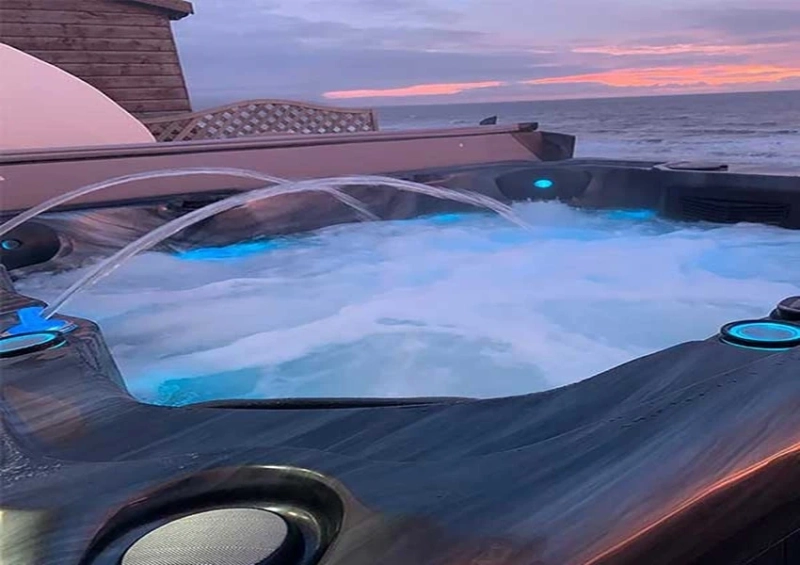When it comes to hot tub maintenance, one of the most crucial — yet often overlooked — aspects is maintaining the correct pH level. pH (potential of Hydrogen) measures how acidic or alkaline the water is on a scale from 0 to 14, with 7 being neutral. For hot tubs, the ideal pH range is between 7.2 and 7.8. Staying within this range is essential for ensuring a safe, comfortable, and long-lasting spa experience.
Why pH Levels Matter
- Comfort for Bathers: Water that is too acidic (low pH) can cause eye irritation, dry skin, and even rashes. On the flip side, water with a high pH (alkaline) may leave your skin feeling sticky and uncomfortable. Keeping the pH balanced helps maintain a pleasant soaking experience for everyone.
- Water Clarity and Effectiveness of Sanitizers: A properly balanced pH level ensures your sanitizers — such as chlorine or bromine — work efficiently. If the pH is too high or low, these chemicals may become less effective, leading to cloudy water and potential bacterial growth. This imbalance means you may end up using more chemicals than necessary, increasing your maintenance costs.
- Protection of Equipment: Unbalanced pH levels can damage your hot tub's components over time. Acidic water can corrode metal parts, erode the spa’s surface, and shorten the lifespan of your heater, pump, and jets. High pH levels can lead to scale buildup, which can clog filters and reduce water flow efficiency.
Factors That Affect pH Levels
- Bather Load: More users introduce body oils, lotions, and sweat into the water, all of which can disrupt the pH balance.
- Water Source: The pH level of the water used to fill your tub plays a foundational role. Hard or soft water can both pose challenges.
- Chemical Additions: Shock treatments, sanitizers, and algaecides can all alter pH levels if not properly balanced.
- Environmental Debris: Leaves, dirt, and rainwater can introduce contaminants that shift pH levels.
How to Maintain Proper pH Balance
- Regular Testing
- Test your hot tub water at least 2–3 times a week using test strips or a liquid test kit. These tools will give you quick, accurate readings of pH and other chemical levels.
- Use pH Increasers and Decreasers
- Depending on your readings, you can adjust the pH using specialized chemicals:
- Use a pH increaser (often sodium carbonate) if your water is too acidic.
- Use a pH decreaser (often sodium bisulfate) if your water is too alkaline.
- Maintain Total Alkalinity
- Total alkalinity acts as a buffer for pH. If it’s out of range (ideal is 80–120 ppm), your pH will be harder to control. Use an alkalinity increaser when needed to stabilize pH fluctuations.
- Clean and Rinse Regularly
- Keeping filters clean and rinsing before entering the hot tub can prevent contaminants from affecting pH balance.
Maintaining pH Levels with Hot Tub Essentials from Hot Tub Suppliers
To make hot tub maintenance easier and more effective, consider investing in high-quality hot tub essentials. Hot Tub Suppliers offer a comprehensive range of hot tub essentials — including reliable pH increasers and decreasers, testing kits, and water balancers — specifically designed to keep your spa water crystal clear and perfectly balanced. With their expert-grade supplies, maintaining ideal pH levels becomes a breeze, ensuring both the health of your hot tub and the enjoyment of its users.


